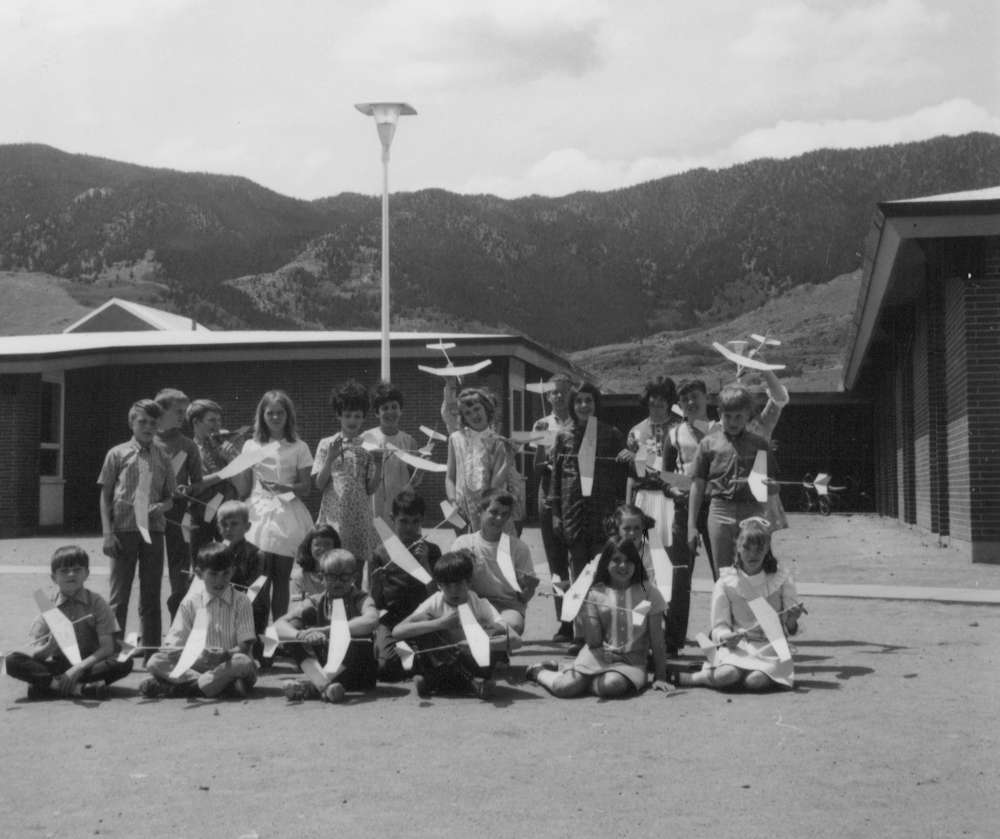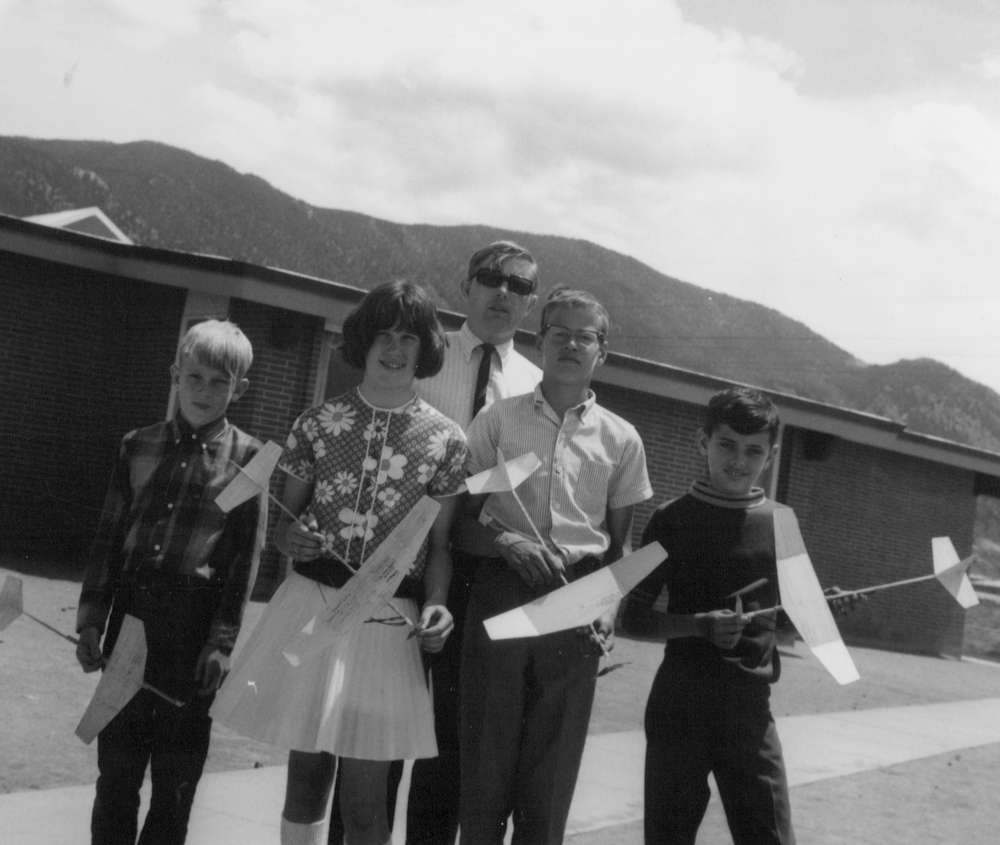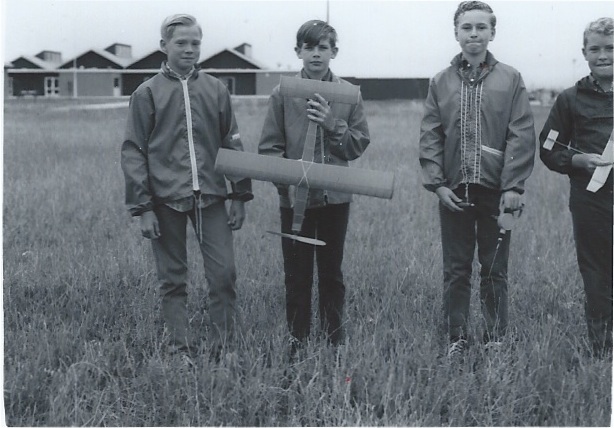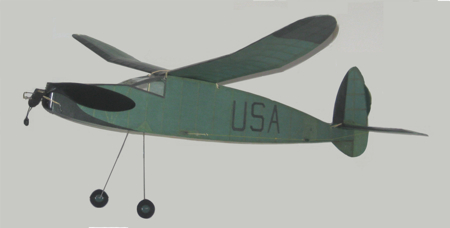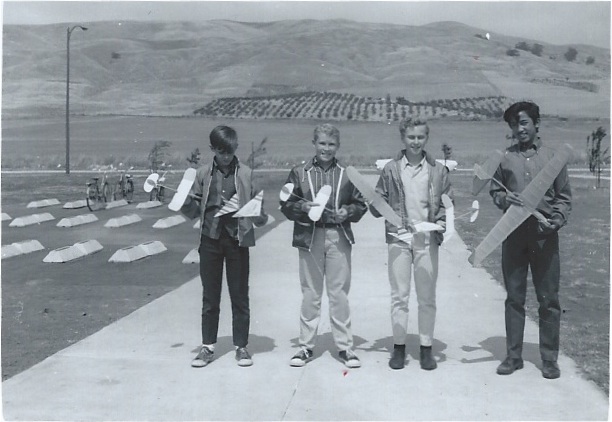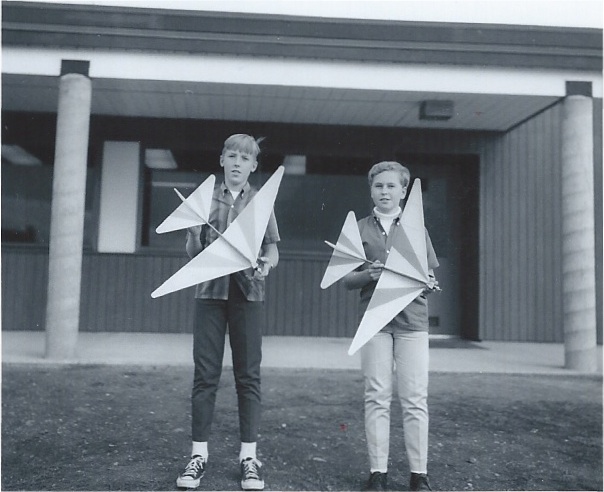Rancho Milpitas Junior High School
Model Airplane Club
1966-1968
Back in the mid to late 60’s I was teaching junior high earth science at Rancho Milpitas Junior High School in Milpitas, CA. Right next to the school was the only free flight site left in the Bay Area. This small flying field was used by the Oakland Cloud Dusters, the San Francisco Vultures, the Sunnyvale “900” Club and many unaffiliated modelers. Our principal found out we could shorten every period by I think 10 minutes legally and add an additional period. All of the teachers signed on to it and you had to come up with your own class and curriculum. I taught model airplanes and did this for two years. I had about 12 kids in the class and most of them for two years.
The first model we started out with was Frank Zaic‘s Flash X-18 which is a terrific flyer for an easy to build flat airfoil model. I moved back to Montana and used these models for another five years with kids and got to know Frank pretty well on the phone. Frank always sent me at no cost extra parts for repairs and also some extra models for kids who broke them or did not have money to purchase a kit. Much credit has to be given to Frank, who designed & kitted this fine beginners rubber powered model, as all of the models flew quite well. To see a plan for the Flash X-18, click the link.
Next my junior high model class went to Bill Warner‘s Poly-Wog, as published in the last issue of Sig Air-Modeler, July-August 1967, a super but short lived magazine, six issues only. The Poly-Wog is a sensational little all balsa rubber model. (See the header photo.) It can be built with tip dihedral only and this works well. Clarence Mather gave me that tip. The Poly-Wog was republished in Flying Models, February 2013, page 32. It is the same model as originally published in Sig Air-Modeler save the wing mount which was a piece of 1/32″ sheet balsa glued to each side of the fuselage. But the article is little different from the original 1967 article. I don’t know about changes as it is hard to imagine this model flying any better than it already does. I think any changes would result in a marginal flight improvement at the best. The 5 1/2 inch prop works just fine. I speak from experience as there has been a Poly-Wog in my flying stable since 1967. One never owns a Poly-Wog for very long if you fly them often. I had a model airplane club after school and about 8 or 9 of the kids built the Poly-Wog. The Oakland Cloud Dusters had a model airplane contest for kids in 1968 and every one of the kids in my club lost their Poly-Wogs in thermals. Joe Bilgri was timing and helping kids trim their models and he was amazed. He donated enough balsa wood to the club to build a thousand Poly-Wogs. This was before super glue days and it took the kids a little time to build the Poly-Wog, but several boys built quite a few of them. I use magic markers to put some color on them but they go out of sight so quickly. With a long loop of 1/8″ or 3/32″ and full turns the Poly-Wog gets terrific altitude. This is hands down the best small all balsa flyer I have ever built. It is a very high performance model.
Detailed, illustrated instructions and sources for downloadable plans for building a Poly-Wog may be found on this site, click the link.
John Pond heard about my junior high model airplane class and asked me if I would run the Northern California AMA-Navy-HIAA contest. I said yes I would. I ran it the first year they started it and think this was 1967. I learned a lot from doing it and did have a lot of help from modelers in the bay area. The winner got a free trip to the national contest and a Navy carrier cruise. At one of kids free flight contests I ran as a warmup to the contest John Pond was there helping me run it. A kid in my club won the Northern California AMA-Navy-HIAA contest going away and went back east to the national contest and carrier cruise. I remember that Lothar won the rubber event handily flying a Bill Warner Poly-Wog. I think he took first in the HLG event and placed high in the control line event. He then went back to the national contest held at some naval station back east where he won two or three events there. The boys name was Lothar Maier, who went on to become the present CEO of Linear Technologies. He was the most focused student that I ever taught.
I can identify two boys in this picture. Second from left is Mitch Koch holding his “Little Mavis”, a design from AeroModeller magazine and a fine flyer. Standing to his right is Lothar Maier holding the winder, a converted Sears hand drill. Lothar won the Academy of Model Aeronautics, Hobby Industries of America & Navy sponsored model airplane contest for Northern California which included a paid trip to the national AMA-HIAA-Navy contest back east complete with a Navy carrier cruise. Lothar did quite well back at that contest winning at least two events as I remember.
After that we built a Sig Cub ROG.
Sometimes after school activities can be quite exciting.
Here is my story and I’m sticking to it. I built a 44″ wingspan Tomboy in 1968 and it is powered by a Cox Baby Bee .049 but I will probably switch it to a diesel. I did not know about diesels when it was built. It is a most satisfying flyer. I have hundreds of flights on it, wearing out one engine, and never had a more stable gas model. I have only crashed it once with minor damage to the starboard wing. I have a stab dethermalizer on the Tomboy but still vividly remember a flight without lighting the DT. I have an eyedropper tank on it and turned it loose with a full eyedropper. It got fairly high but was quite visible. On the way down it caught a weak thermal and it hovered at about 200-400 feet, sometimes going up twice as high but still in sight, just bouncing around, and we ran underneath it for approximately four to five miles. This was highlighted by a German Shepherd dog attacking us about half way and since it was a rather large dog this was a major distraction. I luckily found a pruned tree
limb, being in a fruit orchard. I got a very good head shot on the dog as he was in the air and it really dropped him. It was either the dog or Karl. I looked back up in the sky and there was the Tomboy but some distance away from us. It finally got out of the thermal and landed on the edge of a small strip shopping center. This was in Milpitas, California, and the local shopping area was several car miles from where I taught at Rancho Milpitas junior high school, but we ran a much straighter route through the orchards. I had a student with me who was in my after school model airplane club and this made quite an impression on him. I think that the vicious dog got my heart going more than anything. There are junk yard dogs and orchard dogs. I have had a lot of exciting moments in my life but this model chase stands out vividly with the dog attacking us and getting the model back.
limb, being in a fruit orchard. I got a very good head shot on the dog as he was in the air and it really dropped him. It was either the dog or Karl. I looked back up in the sky and there was the Tomboy but some distance away from us. It finally got out of the thermal and landed on the edge of a small strip shopping center. This was in Milpitas, California, and the local shopping area was several car miles from where I taught at Rancho Milpitas junior high school, but we ran a much straighter route through the orchards. I had a student with me who was in my after school model airplane club and this made quite an impression on him. I think that the vicious dog got my heart going more than anything. There are junk yard dogs and orchard dogs. I have had a lot of exciting moments in my life but this model chase stands out vividly with the dog attacking us and getting the model back.
The remarkable thing about teaching is that you learn so much yourself.
The “Buster” is a good looking, good flying, cabin rubber model, 30” wingspan, designed by Gerald Ziegenfuse. The construction article and plan appeared in the December 1957 issue of Model Airplane News. Some years back the NFFS Journal published the plan for it. Ziegenfuse was an active flyer and designer of rubber models, mostly Wakefield and Mulvihill, back in the 50’s & 60’s. I built a “Buster” along with about eight kids in my junior high model airplane class towards the end of their second year. Imagine that, a junior high that had a model airplane class, last period, 45 minutes, five days a week. At the end of the 1967 school year at Rancho Milpitas Junior High in Milpitas, CA, I was leaving to go teach in Butte, Montana and be closer to fly fishing and home (Lewistown, where I live now). All of the Busters we built flew good and one of the best builders lost his in a thermal. I gave him my Buster and have had it on my plate to build one ever since then. Well forty-two years later I am finally getting to it.
Back in the mid 60’s the movie The Long Flight, the only drama ever made about rubber powered Free Flight to my knowledge, had just been released by Herb Franck. I was on the AMA National Junior Committee (I don’t remember exactly what they called it, but John Pond had me appointed because of my model airplane club at the junior high) and there was a press release about it. Almost immediately I contacted Herb Franck and rented it & the only format Herb ever rented it was in 16 mm. The ’39 Korda Wake sort of stole the movie with an in flight bit that Herb shot from an airplane. I resolved that this model had to be built. Fast forward about three years and I am now teaching fifth grade math & science in Butte, Montana at the Hillcrest School and showed the movie again to the kids in math/science class. This motivated me to start building the ’39 Korda Wake.
My main mentor in building and flying model airplanes in California and my life was a guy named Jack Brown, who took me under his wing. Jack had been on the U. S. Wake team twice and we were in “900” club together. I called Jack talking to him about building this model. Jack asked me “Have you built the wing yet?” (red flag time) I was somewhere in the wing building process. Jack then asked if I was building it from a copy of the original Megow plan and the answer was yes. This was the Megow plan that came with the model in their kit and my plan verified this. Jack then told me “Measure the wings because one wing is longer than the other on this plan.” And Jack was correct as they did not measure out the same. I asked Jack if this was done on purpose and he said absolutely not. Jack grew up in Cleveland and was a teen in the same club as Korda, Lanzo & others. I then built the wing so that the halves were both the same length. That was a good learning lesson for me as I always measure stuff on the plans as plans have many mistakes on them. You can watch the movie The Long Flight – 30 minutes long, on YouTube as it is on there in four segments. If you have not watched the movie, click the link. On the sidebar of the screen playing the movie you will see parts 2, 3, and 4. I know that I have given away or sold this movie in VHS and then DVD over three or four hundred times. I have watched it at least seventy or more times. My wife describes me as a fairly obsessive person. She liked the movie but does not have much interest in model airplanes except that it keeps me out of the bars.
In this picture the boys are holding AMA Darts, Sig “Flip” Hand Launch Gliders, and a Jetco towline glider called the Thermic “C” I think. Mitch Koch is on the far left and Lothar Maier is second from the right. I remember the other boys faces but not their names. In the background is our flying field which was the only free flight field available in the San Francisco Bay Area. The year after this photo it became a housing sub division with I think the rather tacky name of “Jack & Jill”. I think this picture was taken in the spring of 1969. These boys were all good builders and flyers. I lost contact with all of these kids except Lothar who wrote me a letter or two way back when. Lothar is now the CEO of Linear Technology Corporation.
The bottom picture shows Lothar Maier and another boy holding their “Oily Birds” which was a giant Delta Dart with a Cox engine. They climbed well and glided like a rock.
Compiled, arranged and edited from Karl’s posts to the FFML Internet group by Gary Hinze for the Oakland Cloud Dusters History Project. It is hoped that this will stimulate interest in model aviation as a motive for learning, accomplishment and personal satisfaction among young people.
